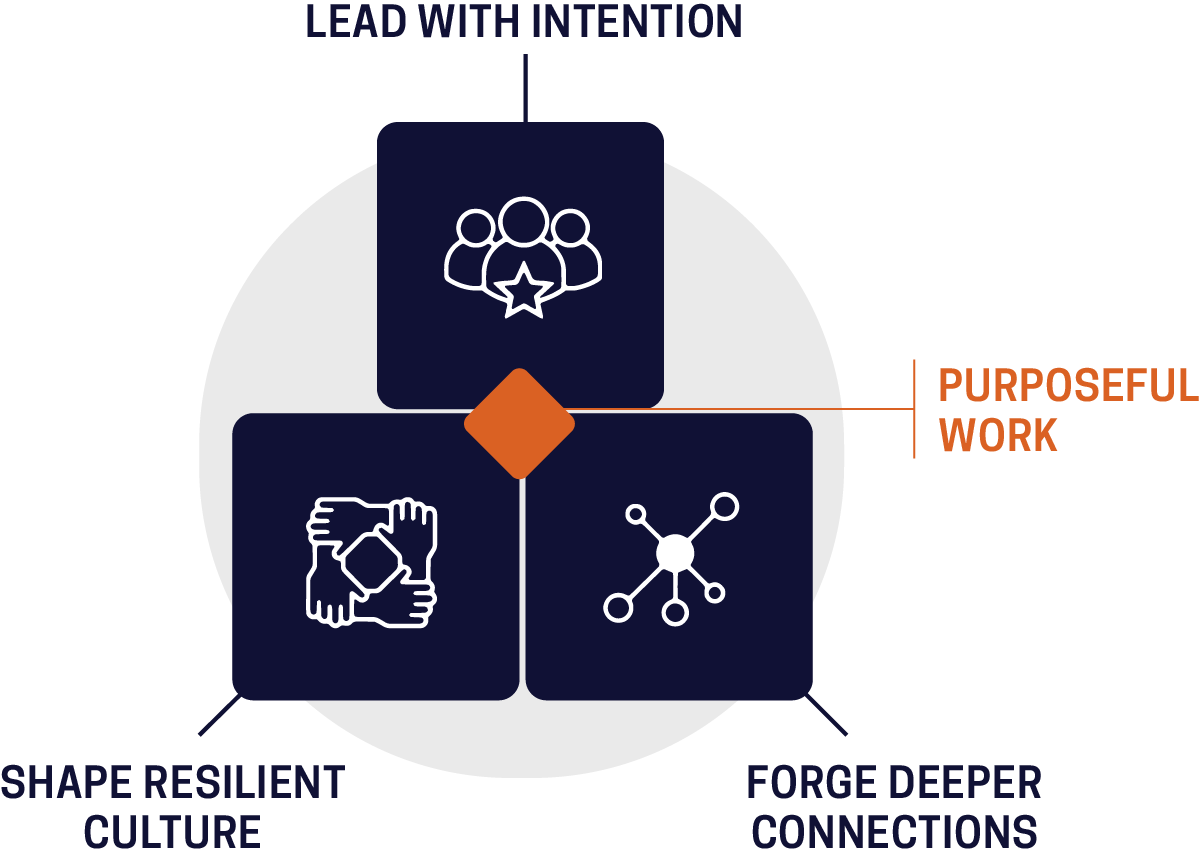Technology enables organizations to shape a resilient culture. IT tools help your team make stronger connections, while also helping establish your values, and determine how your organization measures itself against those values. To drive purposeful work, teams must leverage IT to tell effective digital stories and tailor their communication processes to create, and then share, their culture.
Technology is not just a firefighting tool brought in to solve sticky problems. Instead, we must think of it as a proactive and supplemental enablement role. We can partner technology with most initiatives to reduce silos, provide real-time collaboration, solicit feedback, track metrics and progress. Most importantly, we challenge you to view IT as a cultural enabler, a set of critical tools for teams to define themselves in a highly digitized world.

Tell Digital Stories
We tend to take technology and create records of our clients and our financial outcomes, but we should really embrace the idea that technology can also capture our culture – and be that digital time capsule of what made the company what it is. People just don't think about it that way. They just think about the 1s and the 0s, and the ups and the downs of your ledger, but don’t really think about using technology to capture culture and share it.
When you bring a new employee onto the team, it’s important to express the company’s values. At McChrystal Group, we have new teammates interact with employees, speak with a buddy, and observe how people in the organization interact. Telling digital stories is also another way to express values, one of ours is “Ship, Shipmate, Self”, and share stories of how we live this utilizing our technology.
When you onboard a person, for example, you can send them to a SharePoint that tells the team’s story and reinforces what their culture is. This provides teammates with relevant information, while also giving them the freedom to self-guide, and in the process, work to make deeper, more informed, connections with teammates. This will help speed up the onboarding process, and reduce the need for additional resources.
For McChrystal Group, it could be an example of, “This is where we have our own internal-type YouTube, and you can see our previous leadership ventures”. These types of stories produce a kind of a record of your culture. It’s important for organizations to develop their own internal network separate from their chat functions like Slack or Teams to build shared narratives about who the company is, and what it intends to be. This is critical for diversity and inclusion. We're all trying to figure out ways to forge those kinds of connections with peers with similar backgrounds and stories, so teammates can get a sense of community within their organization.
Focus on Communication Policies
To successfully tell digital stories and both establish and strengthen our culture, we need to ensure we don’t have a communication policy that's so restrictive that we can't forge these deeper connections. Our policies need to be written in a way that enables connections between teammates, rather than restrict them. Knowledge management and a proper information taxonomy can allow for data assets within an organization to be tagged and classified in a manner that allows employees to find information that is relevant to them. With the focus on knowledge management, the free flow of information should be paramount in your company, if there is not a need to restrict information e.g., there is no proprietary or security-based concern, you should allow for any staff member to access the data. All too often companies are leveraging limited resources to recreate the wheel as best practices learned from other initiatives are not being shared across the organization. The ability for employees to be able to click on tags to learn about existing initiatives, link to points of contact to ask questions, or engage the subject matter experts in upcoming opportunities and find related documents will create a culture where innovation and growth are welcomed. The research shows that empowered employees are more productive and happier which in turn can lead to longevity with the company.
Of course, security and privacy are important elements to this. Protecting the company’s interest shouldn't prohibit teammates from feeling safe and connected at work. It may be a mixture of having the right technology tools in place, but also having the right policies in place that allow for those connections to happen.
Clearly Express and Reinforce Your Vision
To lead with intentionality, leaders must think clearly, and continually express and reinforce their vision. Technology can be that digital holder of that process. Teammates working in disparate locations crave that transparency and having values visible, measurable, and referable bring teammates into one shared place of understanding. These values are not something you just talk about every morning at a daily meeting. If there's a place to display these values, we're measuring against it, and we're leading with intentionality to come to whatever that objective is.
Whether it's a revenue goal or something else entirely, teams need to be very clear having that communicated. With the shift to hybrid work environments, IT has expanded the portfolio to capture the employee experience. Passive data can be extracted from tools that employees interact with daily to show wellbeing metrics, meeting culture challenges, collaboration obstacles, leadership development opportunities, and overall organizational opportunities that can be turned into tangible goals and tracked in real-time. The focus of these tools is not to single out individuals, but to highlight issues within an organization that if tweaked could lead to more empowered employees. Additionally, employees can tie their individual goals for career development into the team or department-based goals, that roll up into the overall organizational goals for the year. While objectives and key results (OKRs) are not a new concept, the ability to track them and change in a more agile manner is one of the best lessons learned from the pandemic. In the end, this comes back to having a good information architecture around your organization, so everybody is on the same taxonomy, speaking the same language, building a shared culture as a single team.




